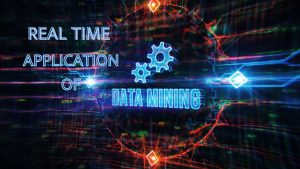Introduction
Data, an undeniably useful source of information, requires management. Without it, data might become corrupted or go useless. Active research data management decreases risks to their long-term research usefulness and mitigates the danger of digital obsolescence. Simultaneously, curated data stored in reputable digital repositories may be distributed to the larger UK academic community.
Curation increases the long-term value of current data by making it available for subsequent high-quality study, as well as minimizing duplication of effort in research data development.
In this blog, we will look into the top points to consider for Planning Digital Data Management, Curation, and Archiving.
What is Data Management?
Data management is a collection of techniques for handling data that a firm collects or creates so that it may be utilized to make educated business choices. The essential principle underlying the entire process is to regard data as a valuable asset, which it is.
Things to consider before planning Digital Data Management
Data management is a critical business driver that ensures data is consistently gathered, validated, stored, and secured. It is critical to establish and implement the appropriate processes so that end users may be satisfied that their data is trustworthy, accessible, and up to date.
- Create a Data Management Process
Consider how you will gather, prepare, store, and disseminate the data. Determine who the owners or stakeholders are who you believe is in charge of carrying out the data management actions. While developing a data process, consider the following questions.
- What tools or technological solutions would you employ to create a robust data infrastructure?
- What will the data-gathering procedure be?
- How will you share data findings with your organization?
- How will you protect your data?
- Embrace Data Backup & Recovery
You must prevent data loss by being vigilant of backups and having a data recovery strategy in place. Here are a few things to think about:
- Put everything on a USB drive. (It is excellent for short-term backup but is susceptible to viruses or physical damage.)
- Back up your files to the cloud.
- Create a data recovery strategy.
Instead, you may employ a backup solution to keep all of your data secure, even in the event of a calamity. Investing in a strong backup and recovery solution makes economic sense, and it is far less expensive than most traditional techniques used by businesses.
- Protect & Secure your Data
With the rising usage of data, firms of all sizes now have the chance to improve their services and customer experience. Nevertheless, it also brings additional responsibilities that must be addressed seriously, such as building effective governance around your company’s information assets so that they may grow in this environment securely without jeopardizing privacy or security requirements.
The following are some things to think about:
- Data availability
- Data transparency
- Data privacy
- Data security
Data Curation Meaning
Digital data curation is the process of selecting, organizing, maintaining, preserving, and providing access to digital content. It involves managing digital assets throughout their lifecycle, from creation and acquisition to dissemination and use. The goal of digital data curation is to ensure the long-term accessibility and usability of digital resources for current and future generations. This is especially important as digital materials can be easily lost or become obsolete without proper curation. The practice of digital data curation benefits a wide range of organizations and individuals, including libraries, archives, museums, universities, research institutions, and businesses.
Things to consider before planning Digital Data Curation
All research endeavors should prioritize the preservation of digital data. Certain research data are unique and cannot be recreated if destroyed or lost; yet, your study can only be evaluated as sound if it refers to verified facts.
- Preserving Digital Data
To protect this significant investment of time and money, a data preservation method tailored to the unique institution must be utilized. Without strong procedures in place, the scientific record and documentary legacy generated in digital form will be vulnerable to digital obsolescence as well as the inherent fragilities of digital media. - Planning for Preservation
You’ve worked hard to acquire your data. Now, make an extra effort to safeguard your findings and ensure that they receive the full attention they deserve. Sound planning is required for effective digital curation. The DCC can assist you in planning and implementing effective large-scale digital data preservation efforts through our online resources, advocacy services, community development activities, and training program.
Because digital curation and data preservation are ongoing activities, you must prepare for digital material preservation throughout its existence. To guarantee that the authoritative nature of digital data is preserved in the long run, preservation procedures must be developed and then implemented. Validation, assigning preservation metadata, providing representation information, and assuring suitable data structures or file formats are examples of such operations.
These preservation activities, when taken together, ensure that your digital items stay original, dependable, and useable while also retaining their integrity.
- The Value of Digital Curation
Institutions must put in place qualified digital curators and effective curation lifecycle management for research teams to reap the full benefits of the research data produced. This will aid in ensuring that critical digital research data is appropriately secured for future use.
You will maximize the impact of your study and inspire trust among the research councils and funding agencies who invest in your work if you understand how to conserve and distribute digital resources so that others may efficiently reuse them.
What is Digital Archiving?
Digital archiving refers to the process of preserving digital materials, such as documents, images, audio and video recordings, and other types of digital content, for long-term access and use. This includes creating backups, verifying data integrity, ensuring data security, and providing access to the digital materials over time. Digital archiving is particularly important for preserving historical and cultural artifacts, as well as for maintaining important business and legal records.
Things to consider before planning Digital Archiving
Professional archivists and digital preservation professionals have created methods to assist you manage your digital resources and reduce the danger of data loss. It’s also a good idea to consider digital preservation while creating new digital files.
- Gather
Determine the location of the files you wish to maintain and copy them to a central computer so they can be backed up. Consider all the computers, gadgets, and internet venues that may house your digital information. - Select
Determine which digital files you wish to save for the long run. Create a list of the digital files that you wish to save. To begin, concentrate your efforts on tiny collections of the most relevant files in specialized topics, such as trip images or study papers. Don’t exhaust yourself by attempting to save everything and wasting time on items you don’t truly require. - Organize
Arrange your files so that they are easy to find and search. Your files are inaccessible unless you can discover them and identify them. Adding descriptive information (metadata) to the file will make it easier to browse your digital collection. Organizing your files into subject-specific folders will also make them easier to access and keep. - Maintain
Digital preservation necessitates ongoing active maintenance to ensure that your files stay accessible. Monitor the storage medium you utilize by checking in on your digital archive on a regular basis. - Backup
Back up all of your key digital data on one computer by transferring them all to other storage devices, such as external hard disks.
Final Thoughts
We understand your desire to be ahead of the curve. Who can blame firms for getting on board with big data and analytics when so many experts are talking about it? Yet, we advise companies not to run before they can walk – without a sound plan in place. Before everything else, you must create strong policies to assure the security, accuracy, and integrity of your data. Otherwise, your analysis will be faulty, and your data will be at risk.
We propose that you prioritize security and compliance in any new plan. This foundation can then be built upon. Data security is something that every firm nowadays desires. We provide the best network application & administrative technologies and processes to preserve, as well as provide a safe and secure environment for your data. To ensure the security of your data and information, Oriental Solutions use industry-leading technology and policies.




